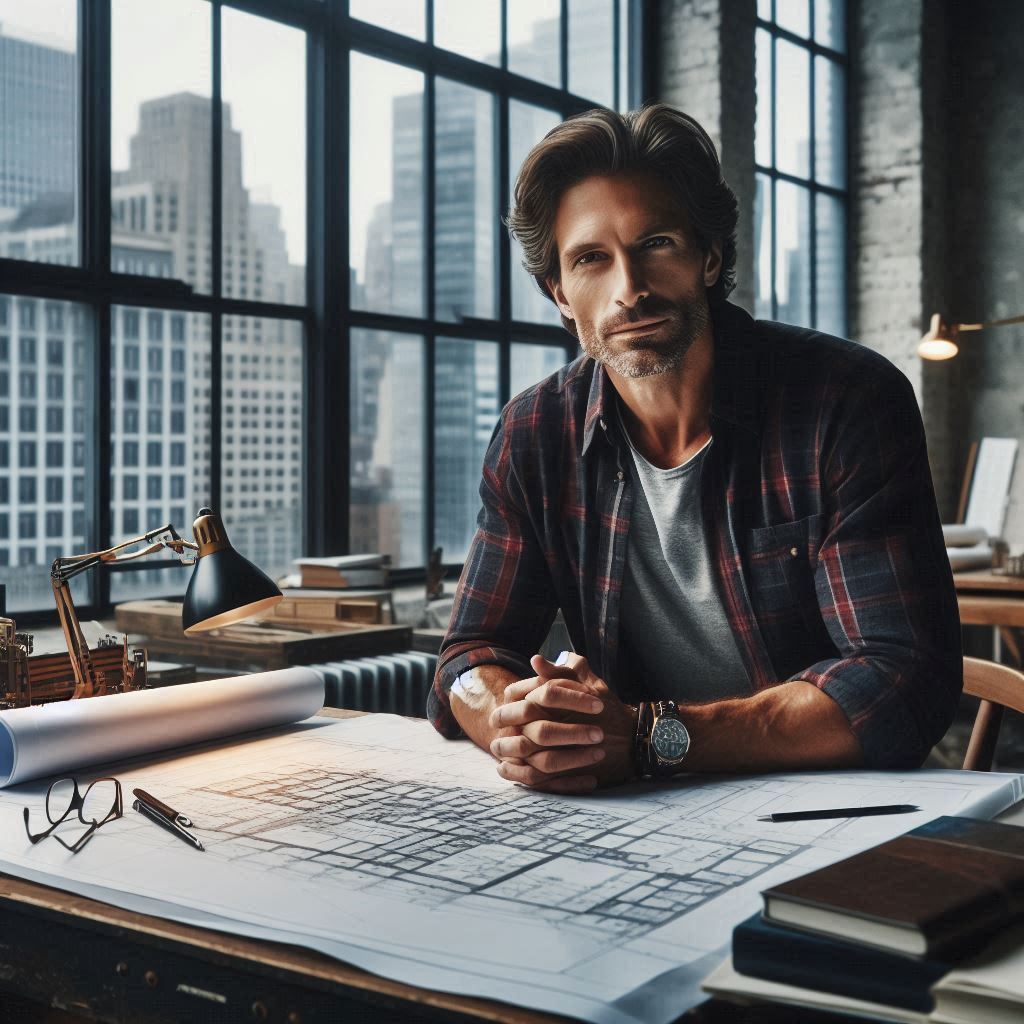Introduction
Landscape architecture plays a pivotal role in shaping outdoor spaces that are functional and visually appealing.
It merges nature and design to create environments that people can enjoy while preserving ecological balance.
Landscape architects design parks, gardens, public spaces, and residential areas with sustainability, aesthetics, and practicality in mind.
Their work goes beyond planting trees and grass.
It involves integrating structures, pathways, water features, and vegetation to create harmonious environments.
Art, in its various forms, has always been a medium for human expression and creativity.
It adds meaning and beauty to spaces, evoking emotions and inspiring thought.
In landscape architecture, art serves as a tool to elevate the design by adding unique visual elements.
It creates focal points and engages visitors on a deeper level.
Whether through sculptures, murals, or interactive installations, art brings life to outdoor spaces.
Incorporating art in landscape architecture transforms ordinary spaces into extraordinary experiences.
Art enhances the environment by providing visual interest, storytelling, and cultural significance.
Artistic elements can reflect the history, values, or identity of a community, making the space more relatable and meaningful to its users.
By blending art with nature, landscape architects can design spaces that not only function well but also captivate and inspire.
Benefits of Incorporating Art in Landscape Architecture Designs
Incorporating art in landscape architecture designs offers numerous benefits that elevate both aesthetic appeal and functionality.
Increased Visual Interest and Focal Points
Adding artistic elements creates focal points and increases visual interest in any outdoor space.
These features draw attention, guiding visitors through the landscape and enhancing their experience.
Sculptures, murals, or other art installations can serve as landmarks, helping people navigate the space while adding beauty.
Adding Elements of Creativity and Uniqueness to the Design
Art introduces creativity and uniqueness into landscape designs, setting them apart from more traditional, utilitarian spaces.
Whether through abstract forms or representational pieces, art fosters a one-of-a-kind environment that engages people on a deeper level.
By infusing artistic elements, landscape architects can turn otherwise simple designs into extraordinary works of art, offering a distinct sense of place.
Creating a Sense of Harmony Between Nature and Human Creativity
One of the most significant advantages of incorporating art is the harmony it creates between nature and human creativity.
Integrating art within natural settings allows for a seamless blend of organic and man-made elements, producing a balanced and cohesive design.
When done thoughtfully, this integration can evoke emotional responses, encourage mindfulness, and connect people with the environment in new and meaningful ways.
The synergy between the natural and the artistic creates a holistic experience for those using the space.
Enhancing the Overall Experience for Visitors and Users of the Space
Art enriches the overall experience for visitors and users of the landscape.
Art pieces provide moments of reflection, inspiration, and engagement, transforming a functional space into an immersive journey.
By making art a central part of the landscape, designers encourage interaction and interpretation, allowing individuals to form personal connections with the environment.
This makes the space not only more enjoyable but also more memorable for those who visit.
In a nutshell, incorporating art in landscape architecture designs offers a range of benefits, from increasing visual interest and creativity to enhancing the emotional and physical experience for users.
By blending human artistry with natural elements, landscape architects create spaces that are not only beautiful but also deeply engaging.
The thoughtful integration of art turns landscapes into dynamic environments where creativity, nature, and culture intersect.
Read: Top Skills Needed for Art Educators and Instructors
Different Forms of Art That Can Be Incorporated
Incorporating art into landscape architecture enhances the overall aesthetic and emotional impact of outdoor spaces.
Various art forms can transform a landscape into a vibrant, engaging environment.
Here are several ways to infuse art into landscape designs.
Sculptures and Installations
Sculptures and installations can serve as focal points in gardens and public spaces.
They draw attention and invite exploration.
Designers often choose pieces that reflect the surrounding environment or convey a specific theme.
For example, abstract sculptures can introduce a modern touch to a traditional garden.
Local artists can create site-specific installations, fostering community connection and pride.
Integrating sculptures also encourages interaction, as visitors often engage with these three-dimensional artworks.
Murals and Graffiti
Murals and graffiti offer a unique way to express culture and identity.
These art forms can liven up walls, fences, and other vertical surfaces.
Artists can collaborate with landscape designers to create murals that reflect local history or nature.
Colorful murals can brighten otherwise dull spaces, making them more inviting.
Graffiti can also capture a sense of urban culture, appealing to a younger audience.
When strategically placed, these artworks enhance the visual narrative of the landscape.
Water Features and Fountains
Water features and fountains blend art with nature, creating serene and dynamic spaces.
Designers can sculpt water elements into various artistic shapes and designs.
These features often attract wildlife, such as birds and butterflies, enriching the landscape.
The sound of flowing water adds a calming ambiance, promoting relaxation.
Artful fountains can serve as conversation starters, becoming landmarks in public parks or private gardens.
Integrating light into these water features can create stunning nighttime displays.
Plantings and Garden Designs Inspired by Art Movements
Incorporating art movements into planting schemes adds depth and character.
Designers can draw inspiration from movements like Impressionism or Minimalism.
For example, an Impressionist garden may feature soft, blended colors and organic shapes.
This approach creates a dreamy, whimsical atmosphere.
Conversely, a Minimalist garden may utilize geometric shapes and a limited color palette.
These design choices can evoke different emotions and responses, enhancing the landscape experience.
By embracing diverse forms of art, landscape architects can create spaces that inspire, provoke thought, and foster connection.
Art not only beautifies landscapes but also deepens their meaning.
This integration enhances both personal enjoyment and community engagement.
Ultimately, incorporating art into landscape architecture transforms outdoor spaces into vibrant reflections of culture, nature, and creativity.
Read: Collaborating with Other Creative Roles
Case Studies
Examples of Successful Landscape Architecture Projects That Have Integrated Art Seamlessly
Successful landscape architecture projects often seamlessly integrate art to elevate the design and user experience.
One renowned example is the Olympic Sculpture Park in Seattle, designed by Weiss/Manfredi.
This park skillfully combines contemporary art with a dynamic urban landscape.
Sculptures by artists like Alexander Calder and Richard Serra enhance the park‘s aesthetic while guiding visitors through the natural environment.
The art installations create focal points that encourage exploration and interaction with the space.
Another standout project is the Millennium Park in Chicago, where landscape and art converge harmoniously.
The Crown Fountain, designed by Jaume Plensa, and Anish Kapoor‘s Cloud Gate (popularly known as “The Bean”) are prime examples of art enriching public spaces.
These sculptures not only serve as iconic visual elements but also enhance the park‘s functionality.
Visitors are drawn to the art, which fosters engagement, reflection, and a deeper connection to the surrounding landscape.
Analysis of How Art Has Enhanced the Overall Design and User Experience in These Projects
Art has the power to transform landscapes into immersive experiences.
In Park G‘ell in Barcelona, Antoni Gaud‘ masterfully blended art and architecture into the natural landscape.
His signature mosaics, vibrant sculptures, and organic forms enhance the park’s overall design.
Visitors can interact with these artistic elements while enjoying the surrounding greenery.
Gaud‘s unique art style creates a whimsical atmosphere that leaves a lasting impression on those who visit.
Incorporating art in landscape architecture serves more than just an aesthetic purpose.
It helps establish a strong emotional connection between users and their environment.
In Storm King Art Center in New York, large-scale outdoor sculptures are thoughtfully placed throughout the natural landscape.
Artists like Maya Lin and Mark di Suvero designed works that blend harmoniously with the landscape.
The art enhances the space, allowing visitors to experience the sculptures in a meditative, tranquil environment.
The integration of art elevates Storm King‘s design and provides visitors with a unique, contemplative experience.
The Importance of Selecting the Right Art Pieces for Specific Landscapes
Selecting the right art pieces for specific landscapes is crucial to achieving this harmony.
Designers must consider the scale, theme, and overall function of the space when choosing artwork.
A piece too large or abstract could overwhelm the landscape, while art that complements the natural setting can elevate the design.
Successful integration occurs when the art reflects the landscape‘s purpose and amplifies the user experience.
By choosing the right art pieces and incorporating them thoughtfully, landscape architects can transform spaces, creating engaging environments that enhance both aesthetic and functional qualities.
These case studies demonstrate the power of art in elevating landscape design to new heights.
Read: Historic Costume Design Inspirations

Uncover the Details: Career Path of a Lighting Designer Explained
Explore Further: Balancing Creativity and Functionality in Design
Practical Tips for Incorporating Art in Landscape Architecture Designs
Collaborating with artists and art specialists
Collaboration is key to the successful integration of art in landscape architecture designs.
Artists and art specialists bring a unique perspective and skill set to the table.
Involve them early in the design process to ensure a cohesive and harmonious outcome.
Their expertise can help translate artistic visions into tangible installations within the landscape.
Transform Your Career Today
Unlock a personalized career strategy that drives real results. Get tailored advice and a roadmap designed just for you.
Start NowConsidering the scale and proportion of art pieces in relation to the surrounding landscape
Scale and proportion play a crucial role in the visual impact of art within a landscape.
Art pieces should complement, rather than overwhelm, the surrounding environment.
Consider the views from different vantage points to determine the optimal placement and size of art installations.
A balanced relationship between the art and the landscape will create a more cohesive and visually appealing design.
Taking into account maintenance and durability of art installations
Art installations in outdoor spaces are exposed to the elements and require regular maintenance.
Select materials and finishes that are durable and weather-resistant to ensure longevity.
Consider the ease of maintenance when choosing art pieces to minimize future upkeep costs.
Regular inspections and upkeep will help preserve the integrity and aesthetic quality of the art within the landscape.
Ensuring that the art enhances the functionality of the space rather than detracts from it
Art should serve a purpose beyond mere decoration in landscape architecture designs.
Consider how the art can contribute to the function or experience of the space.
Integrate art that enhances the overall user experience and adds value to the environment.
Avoid overpowering or distracting art installations that may disrupt the functionality of the landscape.
Incorporating art in landscape architecture designs requires a thoughtful and strategic approach.
By collaborating with artists, considering scale and proportion, maintaining art installations, and ensuring functionality.
Designers can create impactful and visually stunning landscapes that integrate art seamlessly.
Read: Breaking Down Iconic Movie Costumes
Challenges and Considerations
Incorporating art into landscape architecture presents several challenges and considerations that designers must carefully balance.
Below are some key aspects that require thoughtful attention.
Balancing the Artistic Vision with Practical and Functional Design Elements
The primary challenge lies in balancing artistic vision with practical and functional design elements.
While art can elevate a space‘s aesthetics, it should never interfere with its usability.
Designers must ensure that art installations blend seamlessly with the overall purpose of the landscape, enhancing rather than obstructing its function.
For example, in a public park, a large sculpture should not impede foot traffic or block essential views.
Budget Constraints and Cost Considerations
Another key consideration is budget constraints and cost management.
Art installations, especially those involving large sculptures or custom designs, can be expensive.
Designers must work within a set budget while striving to maintain the artistic quality of the project.
This often requires creative thinking, such as sourcing cost-effective materials or commissioning local artists who may offer more affordable alternatives.
In some cases, designers might need to adjust their vision to fit the financial limitations without sacrificing the overall aesthetic impact.
Cultural and Environmental Sensitivity When Choosing Art Pieces for Specific Locations
Cultural and environmental sensitivity plays a crucial role when selecting art for specific locations.
Art installations must reflect the local culture and respect the community‘s values and traditions.
For instance, placing a contemporary sculpture in a historic or sacred site could lead to public backlash.
Similarly, landscape architects need to consider the environmental impact of the materials used in the art.
Some materials may not withstand certain climates, leading to quicker deterioration or damage.
Additionally, designers must avoid materials that negatively affect the surrounding ecosystem or contribute to pollution.
Maintenance and Preservation of Art Installations in Outdoor Environments
Maintenance and preservation of outdoor art installations are critical challenges to address from the outset.
Art in outdoor environments is constantly exposed to the elements, including rain, wind, and sunlight.
Without proper maintenance, these pieces can quickly deteriorate.
Designers must plan for long-term care, choosing materials that can endure harsh conditions and considering how the artwork can be cleaned, repaired, or restored over time.
Regular maintenance schedules should be outlined to ensure the art remains in good condition for years to come.
Generally, while incorporating art into landscape architecture enhances the visual and cultural value of spaces, designers face multiple challenges.
They must balance artistic expression with functionality, navigate budgetary constraints, ensure cultural and environmental sensitivity, and plan for ongoing maintenance.
Successfully overcoming these challenges allows landscape architects to create meaningful, sustainable, and visually striking spaces that resonate with their surroundings and the people who experience them.
Conclusion
Incorporating art into landscape architecture designs offers numerous benefits.
Art transforms ordinary spaces into extraordinary experiences.
It adds depth, character, and emotional resonance to outdoor environments.
By using art, landscape architects can create visually compelling and engaging spaces that attract people.
Art invites interaction, sparking curiosity and delight among visitors.
Creativity and innovation play crucial roles in landscape architecture.
They enable designers to push boundaries and think outside the box.
Artistic elements can reflect the surrounding environment, culture, and community identity.
They can enhance the narrative of a space, making it more relatable and meaningful.
Innovative use of art engages users and encourages them to explore and appreciate their surroundings.
Landscape architects should not shy away from experimenting with different forms of art.
Sculpture, murals, installations, and performance art can all enrich a landscape.
Each art form offers unique opportunities to convey ideas and emotions.
For instance, a bold sculpture can serve as a focal point in a garden.
Meanwhile, a mural can tell the story of the local community.
Such diverse expressions enhance the landscape‘s overall aesthetic appeal.
[E-Books for Sale]
The Big Book of 500 High-Paying Jobs in America: Unlock Your Earning Potential
$19.99 • 500 High-Paying Jobs • 330 pages
Explore 500 high-paying jobs in America and learn how to boost your career, earn more, and achieve success!
See All 500 High-Paying Jobs of this E-Book
1001 Professions Without a Degree: High-Paying American Jobs You Can Start Now
$19.99 • 1001 Professions Without a Degree • 174 pages
Discover 1001 high-paying jobs without a degree! Unlock career tips, skills, and success strategies for just $19.99!




